Build and Comfort
[responsivevoice_button]
The three NXEars models are all designed to be worn in an ‘over-ear’ cable fashion, with the supplied MMCX cable looping over the ear with memory wire. Despite being on the larger side of the IEM scale, I’m happy to report that they’re all incredibly light-weight and super comfortable. The resin used in the 3D printing is soft to the touch, and I experienced no discomfort from wearing any of the models over several hours, thanks to the shells’ nicely-sculpted ergonomic shape.
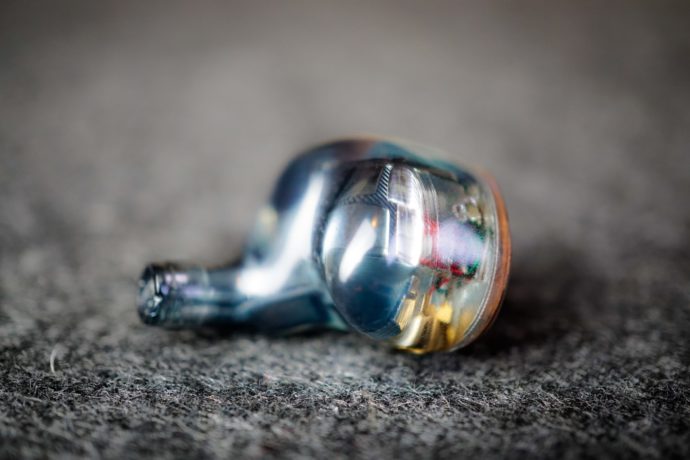
NXEars ‘Basso’
True to their claim, I experienced no sense of pressure imbalance when using any of the NXEars models. I’ve experienced driver ‘crinkle’ and discomfort from far more expensive IEMs, so this is nice if they end-up as your daily drivers.
Build quality feels sturdy and reassuring across the range, although there were some minor paint finishing flaws around the nozzle on the Sonata which will hopefully be ironed-out in full production.
Each of the supplied cables on the review units featured supple, tangle-resistant braided wire which is entirely free of microphonics. Although the Sonata and Basso are to receive different cables upon retail launch, I’m confident NXEars will opt for an equally impressive accompaniment for their products.
Sound quality
After reading a lot of background material around the manufacturing process behind the NXEars range, I was genuinely curious about how they’d sound and how the three different models would go about playing back music with their single, four, and eight driver assemblies. I played all three of the NXEars across a range of mobile-centric source-gear including the Chord Mojo, Earstudio ES100 and the new Astell&Kern SA700 DAP. The Sonata (16-ohm / 108dB sensitivity), Basso (25-ohm / 110dB sensitivity) and Opera (18-ohm / 106dB sensitivity) are all a breeze to drive at and perform genuinely well across all sources tested (including phones), without any background hiss.
Not being able to decide whether to start “bottom-up” with the entry-level Sonata or “top-down” with the flagship Opera, I split hairs and instead aimed for the mid-range Basso.
With a name like Basso I was expecting proceedings to be dominated by lashings of low-end ‘thump’, but instead was presented with reasonably polite levels of bass quantity, albeit with decent punch, extension and speed. Soundstage and layering are certainly above-average, but the Basso’s overall voicing is dominated by a serious bump in the mid-treble region that’s smack-bang in sibilance territory for a lot of music – ‘hot’ is the only way I can describe the tuning of the pair I reviewed. Listening to The Decemberists’ ‘This is Why We Fight’, Colin Meloy’s “s” and consonant sounds in vocals were extremely sharp and fatiguing. Cymbals and acoustic guitar parts in (the very well produced) ‘Harvest’ by Opeth was genuinely tough going and overwhelmed the frequency mix.
Lovers of bright, energetic tunings might get a buzz out of the Basso, but the non-linearity and aggression in the treble isn’t this reviewer’s cup of tea. NXEars suggest that the Basso is “Great for live stage performance monitoring”, and with their levels of punch and sheer information, the Basso might just be perfect for cutting through background noise in this application.
So consider me very surprised when I listened to the flagship Opera next – tuning-wise it couldn’t be any more different to the Basso. The Opera is extremely gentle and relaxed in terms of its presentation, almost bordering on ‘dark’. There isn’t the slightest hint of fatigue listening to any genre in the Opera, just waves of smooth, velvety sound and an overall very pleasant voicing. The same Opeth track that sounded harsh on the Basso sounds positively lullaby-like on the Opera. While the musical detail is certainly there across the frequency-range, the Opera is so laid-back that it might be perceived as a veiled or potentially unresolving in the treble region at times. Thom Yorke’s vocal performance in ‘Kid A’ has a much more rounded and smooth delivery compared to the Opera’s NXEars stablemates, causing it to sound less detailed that due to the sense of less attack and bite on the consonants. There’s also some unevenness through the midrange that creates a sense of distance at times, causing the vocals in ‘Rusalka’ (again by The Decemberists) to lose their intimacy and sound a little woolly. Opera’s bass is agile, nicely textured and never bloated, but also never a stand-out in the mix for reasons of impact or level.
The most impressive part of the Opera’s sound signature is its sense of space. It places you inside in a large, warm, enveloping headstage with genuinely great imaging and layering. While they’re a luxurious and pleasantly-tuned IEM, I always felt myself wanting to grab myself by the ears and shake more out of the Operas. While they have a unique and genuinely lovely tuning, I’d really love to extract more detail, resolution and intimacy (when called for) from the Opera – especially at this price-point, but of course, your mileage may vary.
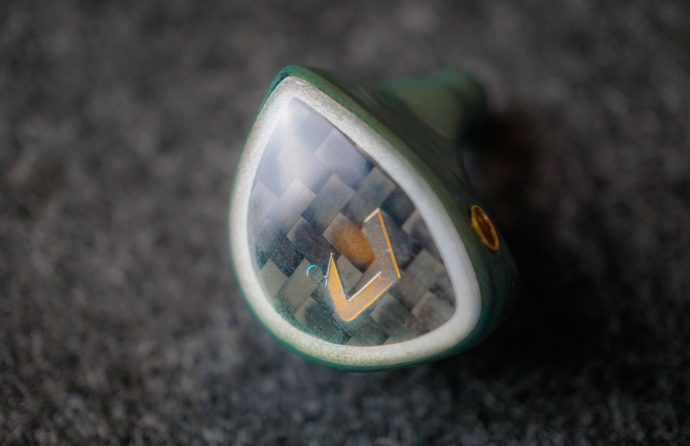
NXEars ‘Sonata’
While the Sonata may be the cheapest and least technically complex of the NXEars, it’s actually my pick of the bunch in terms of straight-up audio enjoyment, and therefore it must get my best overall value nod as well. It’s overall very transparent in its voicing, with an open and crisp timbre that’s very lean – especially compared to its siblings. The Sonata is surprisingly well-extended in both directions, and it’s also the most linear IEM of the three top-to-bottom. While it doesn’t have the natural decay of an equivalent dynamic driver in the bass region, it’s impressive for a single-BA and handily outweighs the single-BA Grado GR10 and Etymotic ER4XR in that respect. Destroyer’s ‘Downtown’ proves the Sonata to have nice bass texture as well as great vocal tone. It’s ultimately not as refined or revealing as the ER4XR but it is likely to be more of a crowd-pleaser.
Last thoughts
NXEars have three very unique, and very different products on their hands both in terms of aesthetics, and sound. If you’re looking to hear something very new and see what the fruits of a singular start-up vision look when they’re turned into a fully realised product line-up, then it’s definitely worth arranging to hear the Sonata, Basso and Opera in real life (like you should with all audio equipment!). Headphones and IEMs are always better experienced than explained (and everyone’s preferences are different, of course), but you might just find your ‘Goldilocks’ IEM in the new NXEars line-up. If you’re in the Big Apple drop by Canjam and give the new NXEars range a whirl.





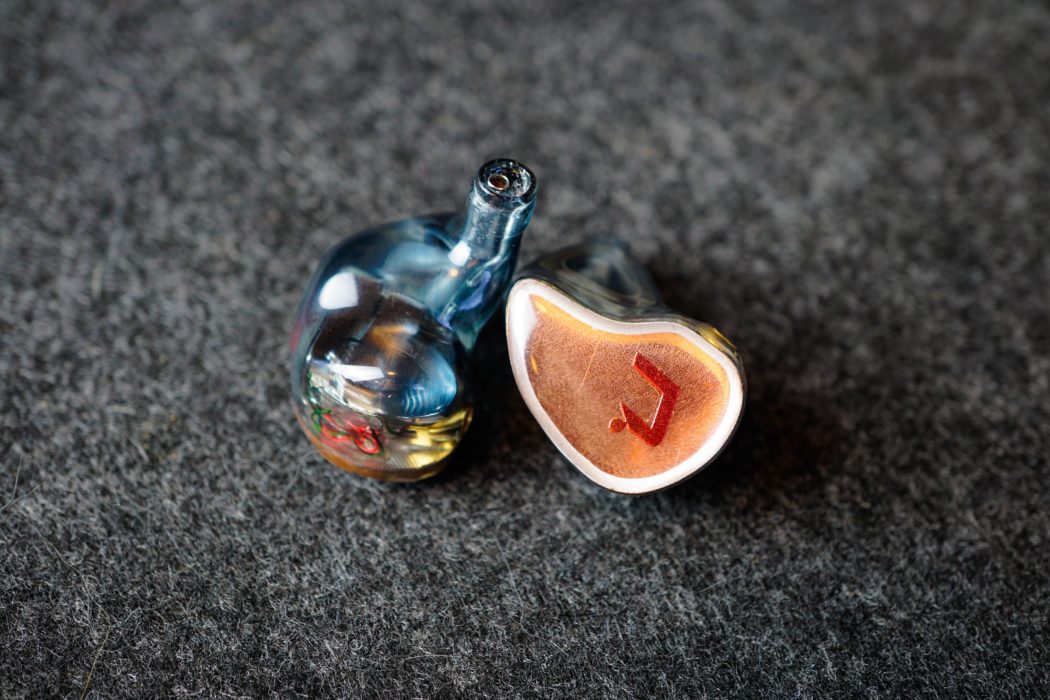
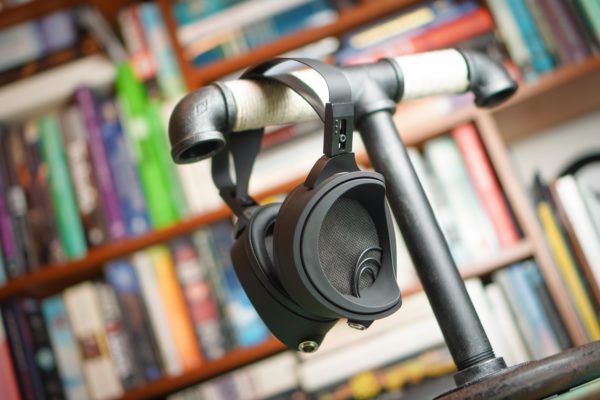
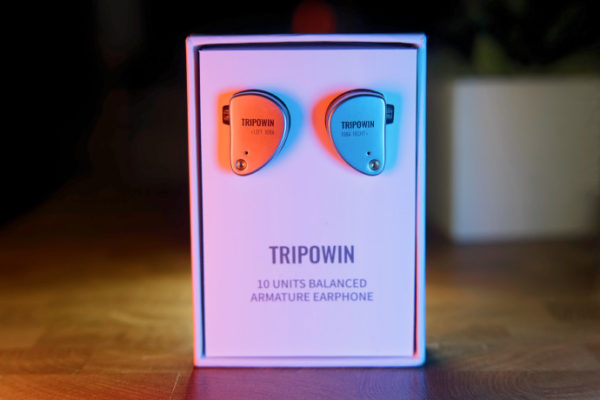
Headphone Addict
I appreciated your review, and agree that the Sonata was good enough to be the “best overall value” of the bunch. But I enjoyed the Opera more for its refined sound and great sense of space, plus it scaled up with a better DAC/amp while not being bad with an iPhone only.
None of my Westone branded cables could fit the flush MMCX jack on the NXEars, and I didn’t think to try the cheaper Basso SPC cable. I should have tried my Moon-Audio Silver Dragon MMCX cable (discontinued) but it sounded good enough that there was no point to try a cable that nobody can buy now. Even on the copper cable, my son said the Opera treble was better than his JH Audio JH16 Pro freqphase custom IEM, which he wishes had more tweeters (and he already has a silver dragon 2-pin cable on them).
When I had the 4-driver Basso to review, I noted that with the 8-core silver plated copper cable with a shallower insertion into my ears that they could indeed be bright sounding. But with the Opera’s single crystal 6N copper cable, and a deeper insertion into my ears via smaller tips, the highs were better tamed. So I used the copper cable to review all of the NXEars on Head-fi.org where I did describe the Basso as Energetic.. crisp… and sometimes bright – with a slight sheen to the treble with the wrong tips and shallow fit. But it is possible that mine were not tuned as “hot” as yours.
With the right cable/tip combination I really enjoyed the Basso and Sonata right out of my iPhone 11 Pro Max with lightning headphone adapter. The Basso and Sonata did get brighter with certain DAC/amps I tried, and especially with the SPC cable. But they also improved with my warmer sounding CEntrance DACport HD and the copper cable (or my BlueDAC).
I know the factory was rushed to get these out for reviews before CanJam, in the face of the looming Corona virus outbreak, and I hope that any further delays caused by the outbreak won’t hurt them too badly.
Headphone Addict
1st sentence of second paragraph should have read as:
“None of my Westone branded cables could fit the flush MMCX jack on the NXEars, and I didn’t think to try the cheaper Basso SPC cable on the Opera.”